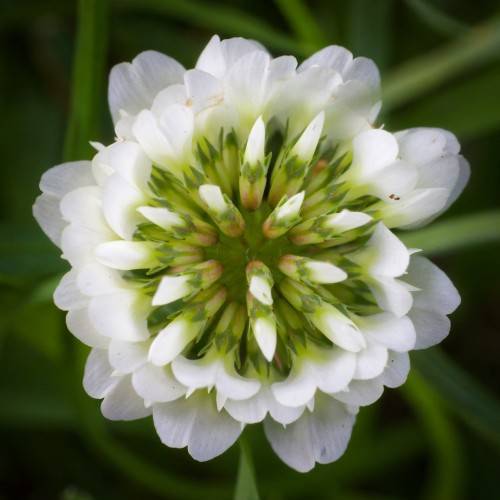
white clover
Trifolium repens
Cycle:
Herbaceous Perennial
Watering:
Average
Hardiness Zone:
3 - 10
Flowers:
Flowers In Spring
Sun:
Full sun, Part sun/part shade
Soil:
Humus rich, Rocky , gravelly , dry, Well-drained
Fruits:
Fruits In Summer Ready In Summer
Leaf:
Yes
Growth Rate:
Moderate
Maintenance:
Moderate
Drought Tolerant:
Yes
Invasive:
Yes
watering
White clover (Trifolium repens) should be watered regularly, with 1–2 inches of water weekly during dry periods, or when the soil is dry to the touch. In general, aim to water deeply and less often, rather than a light sprinkle every day. During warm months, you may need to water 2 to 3 times per week if the soil begins to dry out. Avoid overwatering, as this can weaken the plant's roots and increase its susceptibility to disease.
sunlight
White clover thrives in an environment with full sun and moist soil. While it is considered a perennial, it will begin to die back in the winter when temperatures start to dip and days become shorter. Since it is an adapted, cool-season plant, it will need plenty of sunlight when the days are at their longest in the spring and summer, at least 6 hours of direct sunlight every day during optimal growth periods. In the winter during its dormancy, white clover will only need minimal sunlight, 3 or 4 hours, in order to sustain itself.
pruning
White clover (Trifolium repens) prefers to be lightly pruned only when absolutely necessary. Generally speaking, pruning should be done after flowering in the summer months (July to September) to keep the plants healthy and growing in the desired shape. The amount of pruning varies based on the size of the white clover and the desired outcome. For smaller white clover plants, lightly pruning back excess growth to maintain desired size is typically sufficient. For larger plants, more aggressive pruning back of excess growth may be necessary to create a desired shape and size. In both cases, it is important to always make sure to leave some healthy upper foliage behind so the plants can continue to produce energy through photosynthesis.
